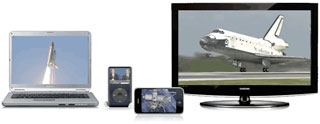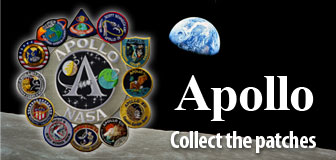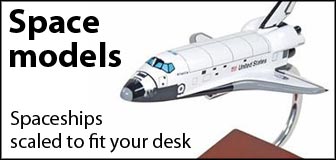Rosetta's decade of exploration
BY STEPHEN CLARK
SPACEFLIGHT NOW
Posted: August 8, 2014

Rosetta's ten-year journey from the launch pad to comet 67P/Churyumov-Gerasimenko took the spacecraft by planets and asteroids, offering a preview of the probe's capabilities and whetting the appetites of researchers waiting for the mission's scientific payoff.
Like a cosmic billiard ball, Rosetta zipped by Earth three times and Mars once, receiving gravitational boosts to bend the spacecraft's trajectory to reach its comet destination.
Launched from French Guiana on March 2, 2004, by a powerful European-built Ariane 5 rocket, Rosetta was too heavy to be dispatched directly to comet 67P. European Space Agency mission planners devised a path for Rosetta to fly by Earth in March 2005, then by Mars in February 2007.
Rosetta returned to Earth for a high-speed encounter in November 2007, then observed asteroid Steins from several thousand miles away in September 2008. After a final flyby of Earth in November 2009, Rosetta made a fleeting visit to asteroid Lutetia in July 2010.
Each planetary flyby gave Rosetta a boost, moving its orbit farther from the sun.
Ground controllers put the spacecraft into hibernation in June 2011 to conserve power. Rosetta was roused from its slumber in January to begin final preparations for its arrival at comet 67P/Churyumov-Gerasimenko, where it arrived on Aug. 6.
See our Mission Status Center for additional coverage.
 Rosetta's journey from the launch pad to comet 67P/Churyumov-Gerasimenko puts the mission in rare company in the number and variety of objects visited. Credit: ESA/S. Corvaja for rocket photo; ESA/Rosetta/MPS for OSIRIS Team MPS/UPD/LAM/IAA/SSO/INTA/UPM/DASP/IDA
Rosetta's journey from the launch pad to comet 67P/Churyumov-Gerasimenko puts the mission in rare company in the number and variety of objects visited. Credit: ESA/S. Corvaja for rocket photo; ESA/Rosetta/MPS for OSIRIS Team MPS/UPD/LAM/IAA/SSO/INTA/UPM/DASP/IDA

Rosetta on the launch pad in Kourou, French Guiana, atop an Ariane 5 rocket. Credit: ESA/S. Corvaja
 Rosetta launched on an Ariane 5 rocket on March 2, 2004, at 0717 GMT (4:17 a.m. local time). Credit: ESA/CNES/Arianespace
Rosetta launched on an Ariane 5 rocket on March 2, 2004, at 0717 GMT (4:17 a.m. local time). Credit: ESA/CNES/Arianespace
 Rosetta's OSIRIS camera caught a glimpse of the moon over the limb of the Earth over the Pacific Ocean during the mission's gravity assist flyby in March 2005. Credit: ESA/Rosetta/MPS for OSIRIS Team MPS/UPD/LAM/IAA/SSO/INTA/UPM/DASP/IDA
Rosetta's OSIRIS camera caught a glimpse of the moon over the limb of the Earth over the Pacific Ocean during the mission's gravity assist flyby in March 2005. Credit: ESA/Rosetta/MPS for OSIRIS Team MPS/UPD/LAM/IAA/SSO/INTA/UPM/DASP/IDA
 Rosetta's Philae lander took this image four minutes before closest approach to Mars during its February 2007 flyby. It captures one of Rosetta's 14-meter long solar wings, set against the northern hemisphere of Mars, where details in the Mawrth Vallis region can be seen. Credit: ESA/Rosetta/Philae/CIVA
Rosetta's Philae lander took this image four minutes before closest approach to Mars during its February 2007 flyby. It captures one of Rosetta's 14-meter long solar wings, set against the northern hemisphere of Mars, where details in the Mawrth Vallis region can be seen. Credit: ESA/Rosetta/Philae/CIVA
 Rosetta's OSIRIS camera obtained this true-color image of Mars at a range of 240,000 kilometers on Feb. 24, 2007. Credit: ESA/Rosetta/MPS for OSIRIS Team MPS/UPD/LAM/IAA/SSO/INTA/UPM/DASP/IDA
Rosetta's OSIRIS camera obtained this true-color image of Mars at a range of 240,000 kilometers on Feb. 24, 2007. Credit: ESA/Rosetta/MPS for OSIRIS Team MPS/UPD/LAM/IAA/SSO/INTA/UPM/DASP/IDA
 Asteroid Steins seen from a distance of 800 kilometers, taken by the OSIRIS imaging system from two different perspectives. The effective diameter of the asteroid is 5 kilometers, approximately as predicted. Credit: ESA/Rosetta/MPS for OSIRIS Team MPS/UPD/LAM/IAA/SSO/INTA/UPM/DASP/IDA
Asteroid Steins seen from a distance of 800 kilometers, taken by the OSIRIS imaging system from two different perspectives. The effective diameter of the asteroid is 5 kilometers, approximately as predicted. Credit: ESA/Rosetta/MPS for OSIRIS Team MPS/UPD/LAM/IAA/SSO/INTA/UPM/DASP/IDA
 Rosetta glimpsed the crescent Earth during its last planetary flyby on Nov. 13, 2009. Credit: ESA/Rosetta/MPS for OSIRIS Team MPS/UPD/LAM/IAA/SSO/INTA/UPM/DASP/IDA
Rosetta glimpsed the crescent Earth during its last planetary flyby on Nov. 13, 2009. Credit: ESA/Rosetta/MPS for OSIRIS Team MPS/UPD/LAM/IAA/SSO/INTA/UPM/DASP/IDA
 Asteroid Lutetia at closest approach on July 10, 2010. Credit: ESA/Rosetta/MPS for OSIRIS Team MPS/UPD/LAM/IAA/SSO/INTA/UPM/DASP/IDA
Asteroid Lutetia at closest approach on July 10, 2010. Credit: ESA/Rosetta/MPS for OSIRIS Team MPS/UPD/LAM/IAA/SSO/INTA/UPM/DASP/IDA
 Comet 67P/Churyumov-Gerasimenko looms in the field-of-view of Rosetta's OSIRIS camera as the spacecraft made its final approach. Credit: ESA/Rosetta/MPS for OSIRIS Team MPS/UPD/LAM/IAA/SSO/INTA/UPM/DASP/IDA
Comet 67P/Churyumov-Gerasimenko looms in the field-of-view of Rosetta's OSIRIS camera as the spacecraft made its final approach. Credit: ESA/Rosetta/MPS for OSIRIS Team MPS/UPD/LAM/IAA/SSO/INTA/UPM/DASP/IDA
|


 Rosetta's journey from the launch pad to comet 67P/Churyumov-Gerasimenko puts the mission in rare company in the number and variety of objects visited. Credit: ESA/S. Corvaja for rocket photo; ESA/Rosetta/MPS for OSIRIS Team MPS/UPD/LAM/IAA/SSO/INTA/UPM/DASP/IDA
Rosetta's journey from the launch pad to comet 67P/Churyumov-Gerasimenko puts the mission in rare company in the number and variety of objects visited. Credit: ESA/S. Corvaja for rocket photo; ESA/Rosetta/MPS for OSIRIS Team MPS/UPD/LAM/IAA/SSO/INTA/UPM/DASP/IDA
 Rosetta launched on an Ariane 5 rocket on March 2, 2004, at 0717 GMT (4:17 a.m. local time). Credit: ESA/CNES/Arianespace
Rosetta launched on an Ariane 5 rocket on March 2, 2004, at 0717 GMT (4:17 a.m. local time). Credit: ESA/CNES/Arianespace Rosetta's OSIRIS camera caught a glimpse of the moon over the limb of the Earth over the Pacific Ocean during the mission's gravity assist flyby in March 2005. Credit: ESA/Rosetta/MPS for OSIRIS Team MPS/UPD/LAM/IAA/SSO/INTA/UPM/DASP/IDA
Rosetta's OSIRIS camera caught a glimpse of the moon over the limb of the Earth over the Pacific Ocean during the mission's gravity assist flyby in March 2005. Credit: ESA/Rosetta/MPS for OSIRIS Team MPS/UPD/LAM/IAA/SSO/INTA/UPM/DASP/IDA Rosetta's Philae lander took this image four minutes before closest approach to Mars during its February 2007 flyby. It captures one of Rosetta's 14-meter long solar wings, set against the northern hemisphere of Mars, where details in the Mawrth Vallis region can be seen. Credit: ESA/Rosetta/Philae/CIVA
Rosetta's Philae lander took this image four minutes before closest approach to Mars during its February 2007 flyby. It captures one of Rosetta's 14-meter long solar wings, set against the northern hemisphere of Mars, where details in the Mawrth Vallis region can be seen. Credit: ESA/Rosetta/Philae/CIVA Rosetta's OSIRIS camera obtained this true-color image of Mars at a range of 240,000 kilometers on Feb. 24, 2007. Credit: ESA/Rosetta/MPS for OSIRIS Team MPS/UPD/LAM/IAA/SSO/INTA/UPM/DASP/IDA
Rosetta's OSIRIS camera obtained this true-color image of Mars at a range of 240,000 kilometers on Feb. 24, 2007. Credit: ESA/Rosetta/MPS for OSIRIS Team MPS/UPD/LAM/IAA/SSO/INTA/UPM/DASP/IDA Asteroid Steins seen from a distance of 800 kilometers, taken by the OSIRIS imaging system from two different perspectives. The effective diameter of the asteroid is 5 kilometers, approximately as predicted. Credit: ESA/Rosetta/MPS for OSIRIS Team MPS/UPD/LAM/IAA/SSO/INTA/UPM/DASP/IDA
Asteroid Steins seen from a distance of 800 kilometers, taken by the OSIRIS imaging system from two different perspectives. The effective diameter of the asteroid is 5 kilometers, approximately as predicted. Credit: ESA/Rosetta/MPS for OSIRIS Team MPS/UPD/LAM/IAA/SSO/INTA/UPM/DASP/IDA Rosetta glimpsed the crescent Earth during its last planetary flyby on Nov. 13, 2009. Credit: ESA/Rosetta/MPS for OSIRIS Team MPS/UPD/LAM/IAA/SSO/INTA/UPM/DASP/IDA
Rosetta glimpsed the crescent Earth during its last planetary flyby on Nov. 13, 2009. Credit: ESA/Rosetta/MPS for OSIRIS Team MPS/UPD/LAM/IAA/SSO/INTA/UPM/DASP/IDA Asteroid Lutetia at closest approach on July 10, 2010. Credit: ESA/Rosetta/MPS for OSIRIS Team MPS/UPD/LAM/IAA/SSO/INTA/UPM/DASP/IDA
Asteroid Lutetia at closest approach on July 10, 2010. Credit: ESA/Rosetta/MPS for OSIRIS Team MPS/UPD/LAM/IAA/SSO/INTA/UPM/DASP/IDA Comet 67P/Churyumov-Gerasimenko looms in the field-of-view of Rosetta's OSIRIS camera as the spacecraft made its final approach. Credit: ESA/Rosetta/MPS for OSIRIS Team MPS/UPD/LAM/IAA/SSO/INTA/UPM/DASP/IDA
Comet 67P/Churyumov-Gerasimenko looms in the field-of-view of Rosetta's OSIRIS camera as the spacecraft made its final approach. Credit: ESA/Rosetta/MPS for OSIRIS Team MPS/UPD/LAM/IAA/SSO/INTA/UPM/DASP/IDA
